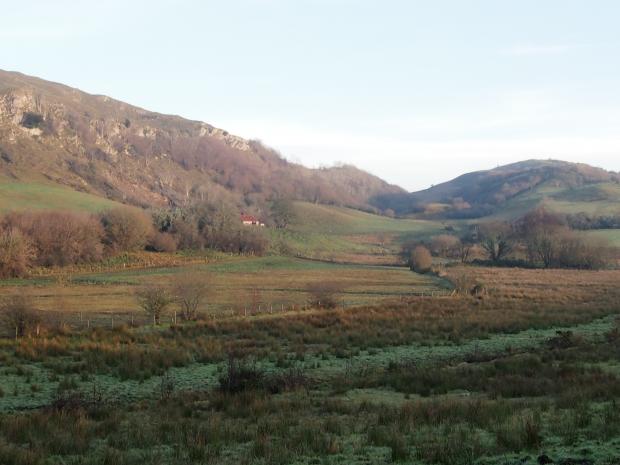
Monawilkin is of Special Scientific Interest largely because it contains the best example of unimproved calcareous grassland in Northern Ireland.
The grassland has developed on two main blocks of Carboniferous Upper Limestone - Monawilkin and Callow - separated by steep valleys and with limestone cliffs stretching along the southern slopes. Several distinctive grassland communities occur, reflecting variations in slope, aspect and soil depth. This variety has enabled a typical range of calcareous plants to thrive including kidney vetch crested hair-grass, and wild thyme, alongside more locally distributed species, such as Irish eyebright and blue moor-grass.
In addition, the south facing limestone scarp is the best and richest inland site for moths and butterflies in Northern Ireland. It is the only existing site in Northern Ireland for the small blue butterfly and there are, in total, recent records for 23 butterfly species. The uncommon, day flying, narrow-bordered bee hawkmoth has recently been recorded, and the site is also the only known Northern Irish locality for the pale Eggar moth. Some work on micro-lepidoptera (moths and butterflies) in 1988 revealed several species not previously recorded in Fermanagh and Northern Ireland, including the twirling moth Eulamprotes unicolorella.
The site is also of importance for the mosaic of other habitat and community types found which include areas of hazel scrub, oak/birch woodland, calcareous fen (flushes), and - on sandstone in the north west of the site - acid grassland and heath. The sharp transition from calcareous to acid plant communities in this part of the site is particularly striking. Transitions from open water to fen, swamp, and alder carr are present around Carrick and Monawilkin Loughs.
Related articles
- ASSI Guidance for Public Bodies/Competent Authorities
- Coastal Areas of Special Scientific Interest
- Conservation Management Plans (CMPs)
- European Marine Sites - Marine Special Areas of Conservation and Special Protection Areas
- Introduction to Conservation Management Plans (CMPs) for Northern Ireland’s Special Areas of Conservation
- Marine Conservation Zones
- Marine Protected Areas
- Marine Ramsar sites
- Portrush Coastal Zone
- Special Areas of Conservation
- Special Areas of Conservation for Harbour porpoise
- Special Protection Areas
